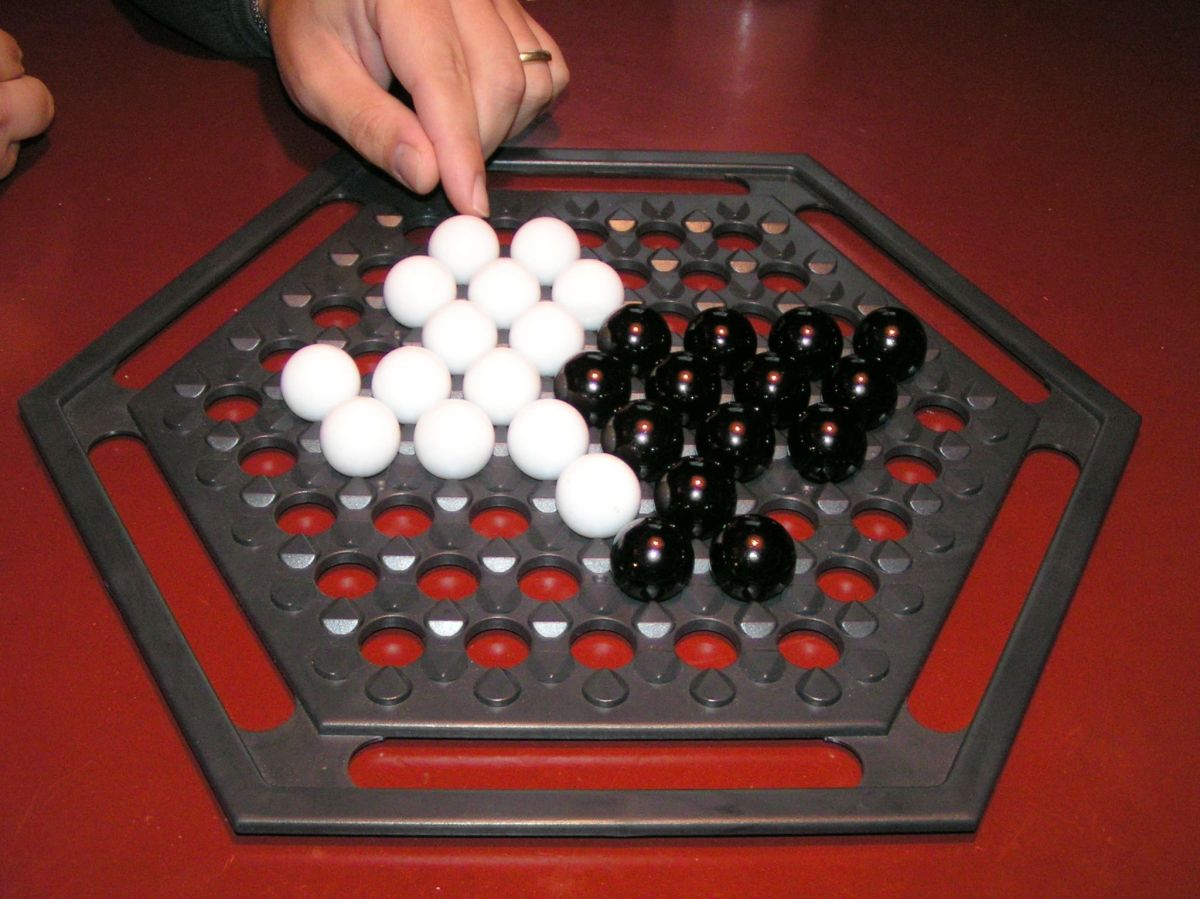Abalone is a two-player abstract strategy board game designed by Michel Lalet and Laurent Lévi in 1987. To win a player must push 6 of their opponent’s marbles off of the board.
My Abalone set arrived in the mail yesterday, and the first thing I noticed were the amazing aesthetics of the game. Lalet and Lévi created a game that engages multiple senses. Visually, the board and the marbles are beautiful, even more so when the opposing marbles are pushing into one another in a strategic battle. The game is incredibly tactile as well. The marbles are large and made out of glass rather than plastic so they have a nice weight to them. And the experience of pushing a row of marbles and feeling them click back into place is just fantastic. And the sounds of the game, the clicks of the marbles against each other and the sound of a marble being knocked into the gutter that surrounds the board, are wonderful too.
Beyond the aesthetics of the board and pieces though, the game itself is clearly a strategic triumph. The simple rules of the game naturally produce strategic principles such as control the center and make sure not to let your opponent split your marbles. Furthermore, there are certain shapes that are very strong or efficient and other shapes that are weak or inefficient. For example, since a maximum of three of your marbles can be pushed at one time, lines that are greater than 3 are bad shapes, since to use three of those marbles in a push would require disconnecting one’s own group. A rhombus with three marbles per side, by contrast, is an efficient, strong shape. It is safe from pushes along two out of the three board axes and can push in many directions itself. There is also a nice balance between material and positional advantages in this game. Although having pushed out more of your opponent’s marbles is certainly a significant advantage, a player could have a 4-2 or even 4-1 lead but nevertheless be losing because of positional factors.
The general feel of Abalone is much less tactical and dynamic than something like chess, although the ability to calculate/visualize possible position transformations is often still important.
The central pushing mechanism is also incredibly versatile. Not only can you get a different experience by trying a different starting position (though some starting positions are susceptible to deadlocks in which neither player can make any progress), but there are also more substantive variants as well, and I’m sure there are more as of now unimagined variants that would be possible.
Here are some ideas that Abalone players have come up with:
PLANETOID ABALONE
Planetoids are simply immovable objects placed on the Abalone game board. To create Planetoids, neutral-colored marbles are useful. There are several methods of Planetoid placement.
A. Place Planetoids in an agreed-upon pattern on the board before the start of play.
B. Place Planetoids at the start of play. Each player gets the same number of Planetoids and places them as desired on the board.
C. Each player gets the same number if Planetoids They are placed on the board during play as that player’s turn.
Special rule: Pieces completely blocked in by Planetoids are considered pushed off the board. It is possible by this rule to obtain a draw.
BLACK HOLE ABALONE
One or two marbles of a neutral color are placed on the board at the start of the game, either on the center space or on the two middle corner spaces. These marbles are “Black Holes.”
A marble that is pushed into a Black Hole does not move the Black Hole. Instead, that marble is removed from the board, but does not count toward victory for the opposing player.
Marbles moving or being pushed onto spaces next to a Black Hole are paralyzed. They may not push or move on their own, but they may be pushed by either side. Paralyzed Marbles count toward the maximum that can participate in a column of a single color (three total). In practice, only a single marble may participate in a column of three. This is because it takes two others to move it; two marbles would require three others to move them, bringing the total to five. Opposite-colored marbles are unaffected by their opponent’s plight; they are dealt with normally.
Note: moving a paralyzed piece immediately results in the moving piece becoming stuck.
See this page for further variants, as well as starting positions for 3, 4, 5, and 6 players:
If you’re interested in learning more about this game, I recommend watching the high level matches that are available on YouTube. For instance:
The Abalone World Championship is going to be held online on August 30th, so make sure to tune in or toss your hat in the ring yourself! I hope this wonderful game continues to attract followers!
I will also say that I am intrigued by what play would be like on a larger board with more marbles. Would this expansion allow for a deeper strategies, or would the game behave essentially the same?
